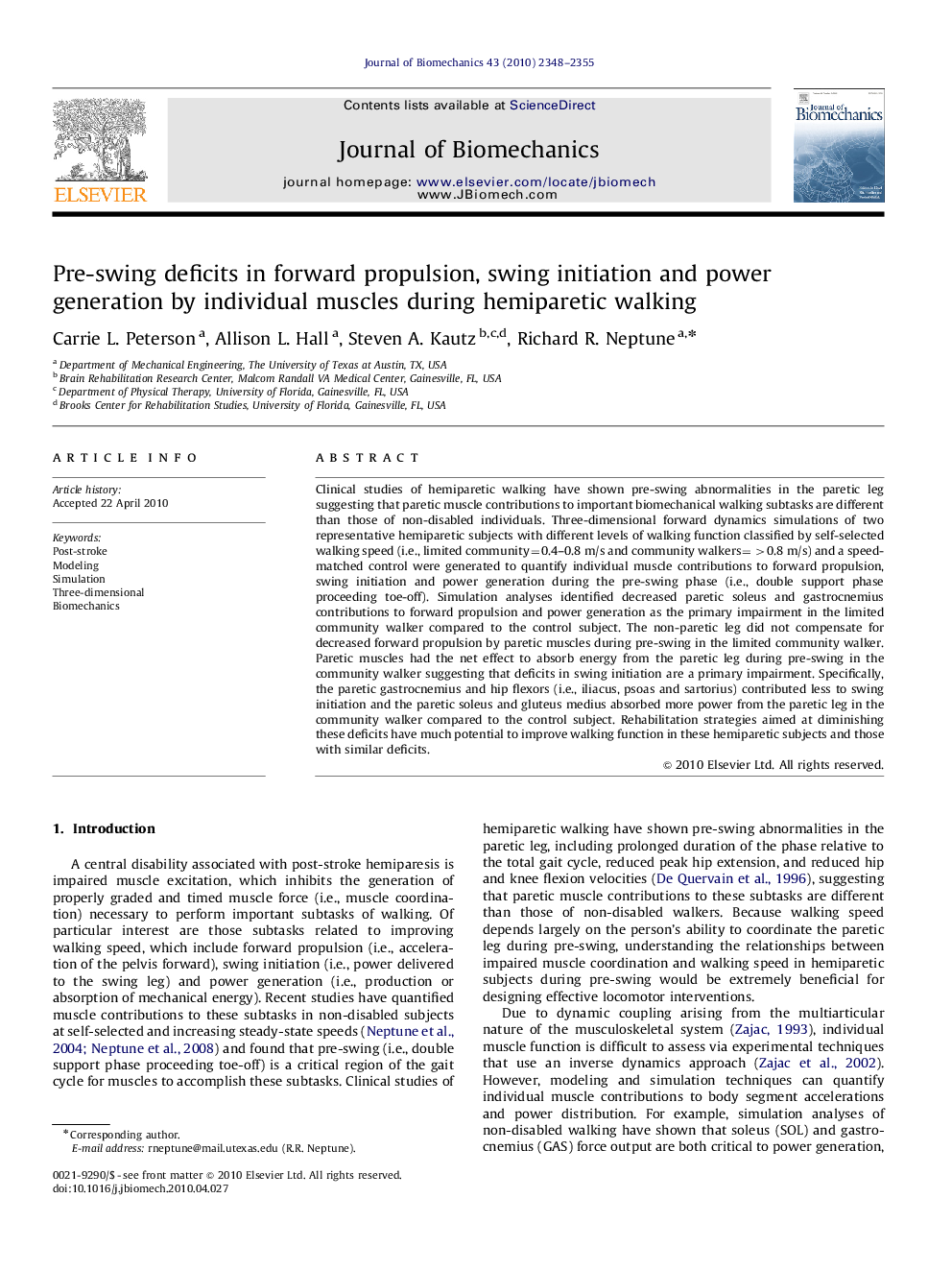| Article ID | Journal | Published Year | Pages | File Type |
|---|---|---|---|---|
| 10433068 | Journal of Biomechanics | 2010 | 8 Pages |
Abstract
Clinical studies of hemiparetic walking have shown pre-swing abnormalities in the paretic leg suggesting that paretic muscle contributions to important biomechanical walking subtasks are different than those of non-disabled individuals. Three-dimensional forward dynamics simulations of two representative hemiparetic subjects with different levels of walking function classified by self-selected walking speed (i.e., limited community=0.4-0.8Â m/s and community walkers=>0.8Â m/s) and a speed-matched control were generated to quantify individual muscle contributions to forward propulsion, swing initiation and power generation during the pre-swing phase (i.e., double support phase proceeding toe-off). Simulation analyses identified decreased paretic soleus and gastrocnemius contributions to forward propulsion and power generation as the primary impairment in the limited community walker compared to the control subject. The non-paretic leg did not compensate for decreased forward propulsion by paretic muscles during pre-swing in the limited community walker. Paretic muscles had the net effect to absorb energy from the paretic leg during pre-swing in the community walker suggesting that deficits in swing initiation are a primary impairment. Specifically, the paretic gastrocnemius and hip flexors (i.e., iliacus, psoas and sartorius) contributed less to swing initiation and the paretic soleus and gluteus medius absorbed more power from the paretic leg in the community walker compared to the control subject. Rehabilitation strategies aimed at diminishing these deficits have much potential to improve walking function in these hemiparetic subjects and those with similar deficits.
Related Topics
Physical Sciences and Engineering
Engineering
Biomedical Engineering
Authors
Carrie L. Peterson, Allison L. Hall, Steven A. Kautz, Richard R. Neptune,
